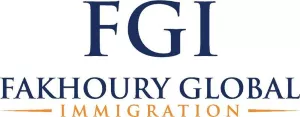-
House Passes DREAM Act; Uphill Battle in Senate.
Dec 09, 2010: The U.S. House of Representatives voted to pass
the DREAM Act on Wednesday night, sending the immigration reform
bill to the Senate. The DREAM Act would provide a path to
citizenship for hundreds of thousands of illegal immigrants who
entered the United States when they were children.
"This is about a commitment to our future," said Nancy
Pelosi, D-Calif., Speaker of the House. "It's about a
recognition of what these young people can mean for our
country."
The DREAM Act proposes to give "conditional" green cards
to undocumented immigrants if they graduate high school and enter
college or military service. After ten years, these individuals
would be eligible to receive permanent residency and, eventually,
citizenshp, as long as they meet all other requirements.
While the House vote is good news for supporters of the DREAM Act,
there will be a tough fight in the senate. While many Republican
senators originally supported the bill, the majority of Republican
senators now oppose it, considering the bill a mass amnesty for
illegal immigrants. For the bill to pass the Senate, it will need
the support of the majority of Democrats and a few Republicans.
-
U.S. Makes Changes to Visa Application Process in Mexico.
Dec 07, 2010: Starting January 10, 2011, the U.S. Embassy and
Consulates in Mexico will make changes to the way visas are
processed. Under new procedures, the majority of applicants will
visit an Applicant Service Center (ASC) before their consular
section interview. Staff at the ASC will collect biometric
information that will be reviewed prior to the applicants'
interviews with the consular section. These service centers will be
located in buildings not connected to the U.S. Embassy or
Consulates.
Please note that the total cost for visa applications will go down.
Instead of paying separate fees for obtaining information and
scheduling an appointment, the visa application and courier
services, applicants will now pay just one fee that covers all
three above-stated fees. The application fee will remain the same:
$140 for a tourist application, $150 for a petition-based case and
$390 for a treaty-trader or investor visa.
Please additionally note that applicants at the U.S. Consulates in
Ciudad Juarez, Monterrey and Nuevo Laredo will no longer be
required to pay a $26 surcharge.
-
New Pilot Program Will Ease Travel for Frequent Fliers.
Dec 03, 2010: A new program will ease the process for frequent
fliers to pass through immigration and customs between the United
States and Mexico. The pilot program will be an expansion of the
Global Entry program.
Applicants for the new pilot program will be required to pass
robust background checks and will additionally be required to
provide biometrical data. If approved for participation, the
applicants will be able to use Global Entry kiosks at U.S. airports
to receive travel approval, after providing their passports or
resident cards, providing digital fingerprints and answering
customs declaration questions on the kiosk.
-
USCIS Publishes Interim Memo Regarding Fee Waivers.
Dec 01, 2010: USCIS has published an interim memo regarding fee waiver processes in relation to the new application and petition fee increases that went into effect on November 23, 2010. USCIS has now developed a new Form I-912, the Request for Fee Waiver, to support the fee-waiver request process. The form became available for public use on November 23. The form is the standard means to request a fee waiver and is intended, USCIS says, "to bring clarity and consistency to the fee-waiver process." Learn more about the fee waiver guidelines at http://bit.ly/frcQfS.
-
U.S. Ambassador Announces Reorganization of Consulates General in India.
Nov 23, 2010: The U.S. is implementing a new visa application process for Indians that will make obtaining visas more convenient, says the U.S. ambassador to India. The U.S. Embassy in New Delhi and Consulates General in Mumbai, Chennai, Kolkata and Hyderabad are now accepting visa applications at all visa facilities in India, regardless of the applicant's home address or city of residence. After the opening of the new Consulate General in Hyderabad, the U.S. mission in India has been looking for other ways to best manage the changing population dynamics of that country. Part of this response has been to reorganize U.S. consular districts in India. The consular districts have been reorganized as follows: Embassy Delhi: Bihar, Delhi, Haryana, Himachal Pradesh, Jammu and Kashmir, Punjab, Rajasthan, Uttarakhand, Uttar Pradesh, Bhutan Consulate Mumbai: Goa, Gujarat, Madhya Pradesh, Maharashtra, Diu and Daman, and Dadra and Nagar Haveli Consulate Hyderabad: Andhra Pradesh, Orissa Consulate Chennai: Karnataka, Kerala, Puducherry, Lakshadweep, Tamil Nadu, Andaman and Nicobar Islands Consulate Kolkata: Arunachal Pradesh, Assam, Chhattisgarh, Jharkhand, Manipur, Meghalaya, Mizoram, Nagaland, Sikkim, Tripura, West Bengal?? "With these changes, we believe our Consulates General and our Embassy in New Delhi will be even better positioned to support and serve Indian visa applicants, as well as American citizens and businesses throughout India," said U.S. Ambassador to India, Timothy J. Roemer.
The content of this article is intended to provide a general guide to the subject matter. Specialist advice should be sought about your specific circumstances.

